The Fishing
 The whole ecosystem in this part of Alaska centers around Sockeye
Salmon. The sockeye spend three to five years in the ocean, and then return
to the river of their birth to spawn and die. The males and females turn
bright red, and the males develop hunchbacks and severe dental issues. In
the image on the left is a male with a female in the background. Click on
the image to see a larger version. (I took this picture with a disposable
waterproof camera, it came out pretty nice!)
The whole ecosystem in this part of Alaska centers around Sockeye
Salmon. The sockeye spend three to five years in the ocean, and then return
to the river of their birth to spawn and die. The males and females turn
bright red, and the males develop hunchbacks and severe dental issues. In
the image on the left is a male with a female in the background. Click on
the image to see a larger version. (I took this picture with a disposable
waterproof camera, it came out pretty nice!)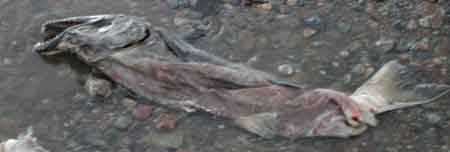 The bears migrate in to dine on the salmon and the trout follow the salmon
upstream and dine on the eggs. Once the salmon have spawned they die, and
the birds, insects and bacteria dine on their carcasses. (The image at right
is typical of many of the river shorelines.) The bacteria gives life to plankton,
which flows downstream into the lakes. The salmon eggs hatch, and the fry
head down to the lakes to grow before heading out to sea. In the lakes they
dine on the plankton, which is there because of the rotting carcasses of
their parents.
The bears migrate in to dine on the salmon and the trout follow the salmon
upstream and dine on the eggs. Once the salmon have spawned they die, and
the birds, insects and bacteria dine on their carcasses. (The image at right
is typical of many of the river shorelines.) The bacteria gives life to plankton,
which flows downstream into the lakes. The salmon eggs hatch, and the fry
head down to the lakes to grow before heading out to sea. In the lakes they
dine on the plankton, which is there because of the rotting carcasses of
their parents.We were there to catch the trout. Rainbow trout. We had
our first omen at lunch on day one:
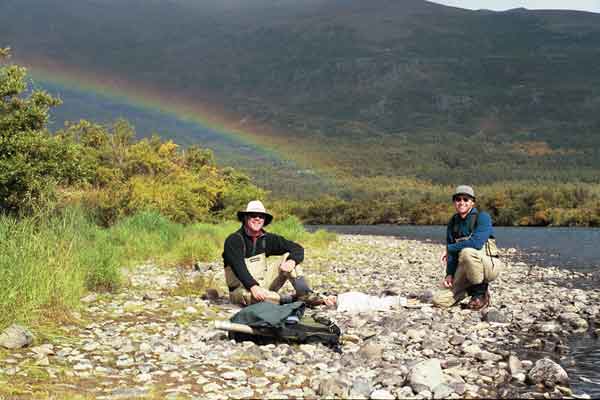
There were days of quality and days of quantity. On a quality day we'd catch a dozen or so big rainbows - 20" plus. On my best quantity day I landed probably 60 trout, all in the 10-18" range. Here are a few of the big ones that we bothered to photograph:
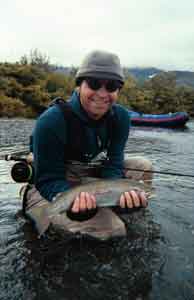
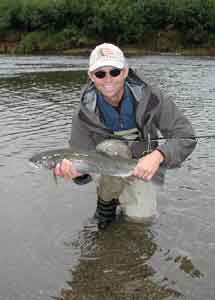
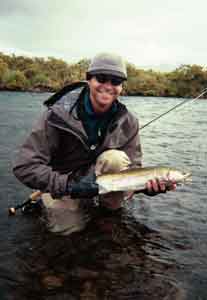

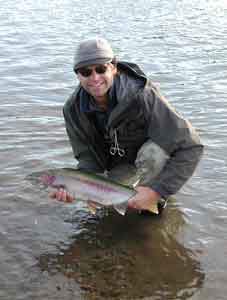
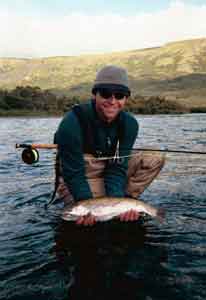
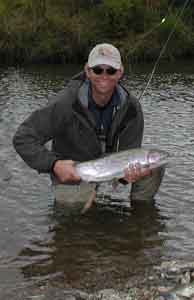
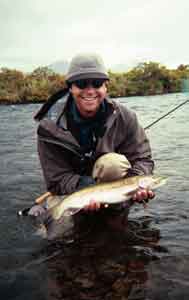
The monsters deserve their own pictures. My best was in the middle of the week. Tom's was near the end of the last day. You can tell they were our biggest because our guides wanted to be in the pictures holding the fish.


